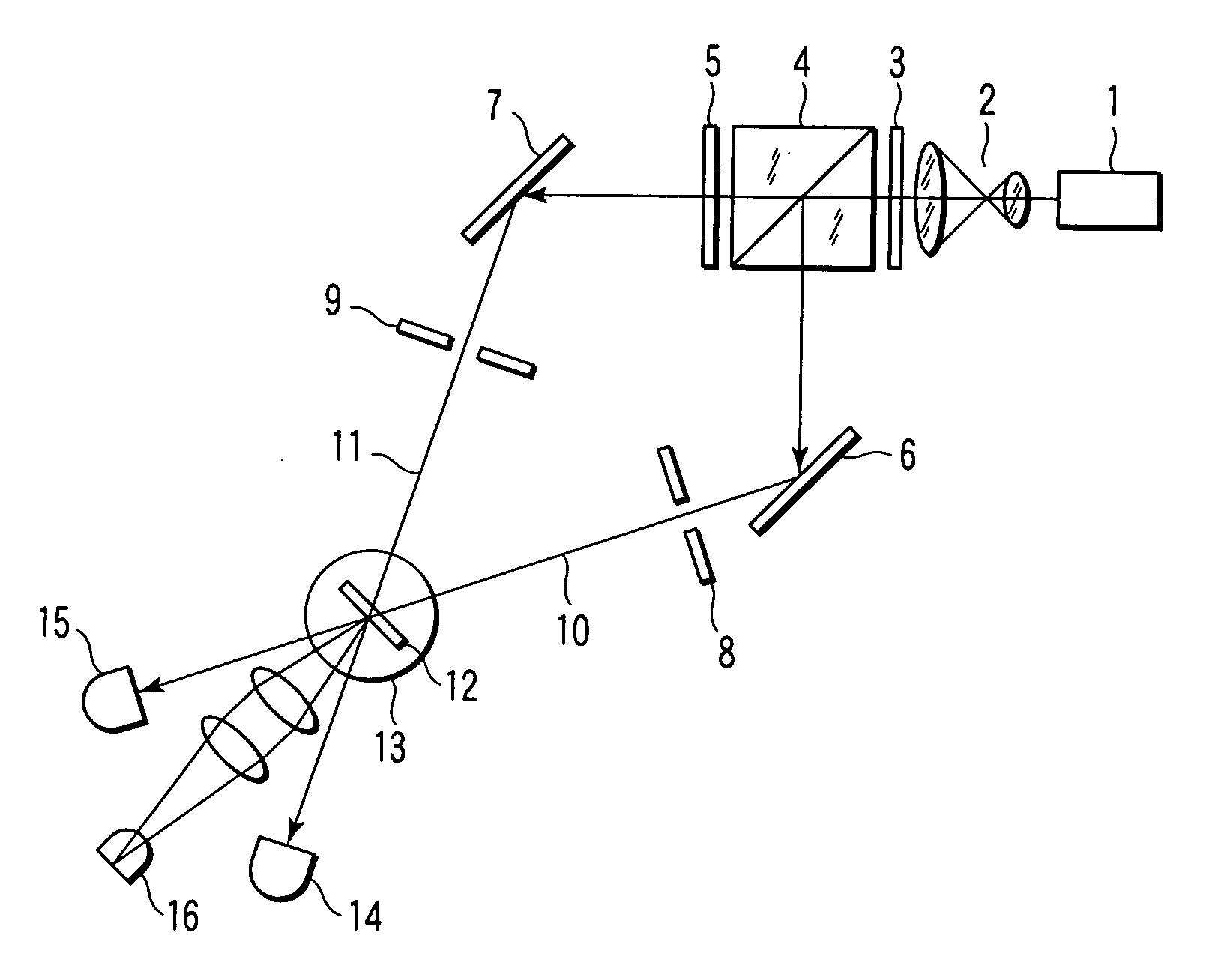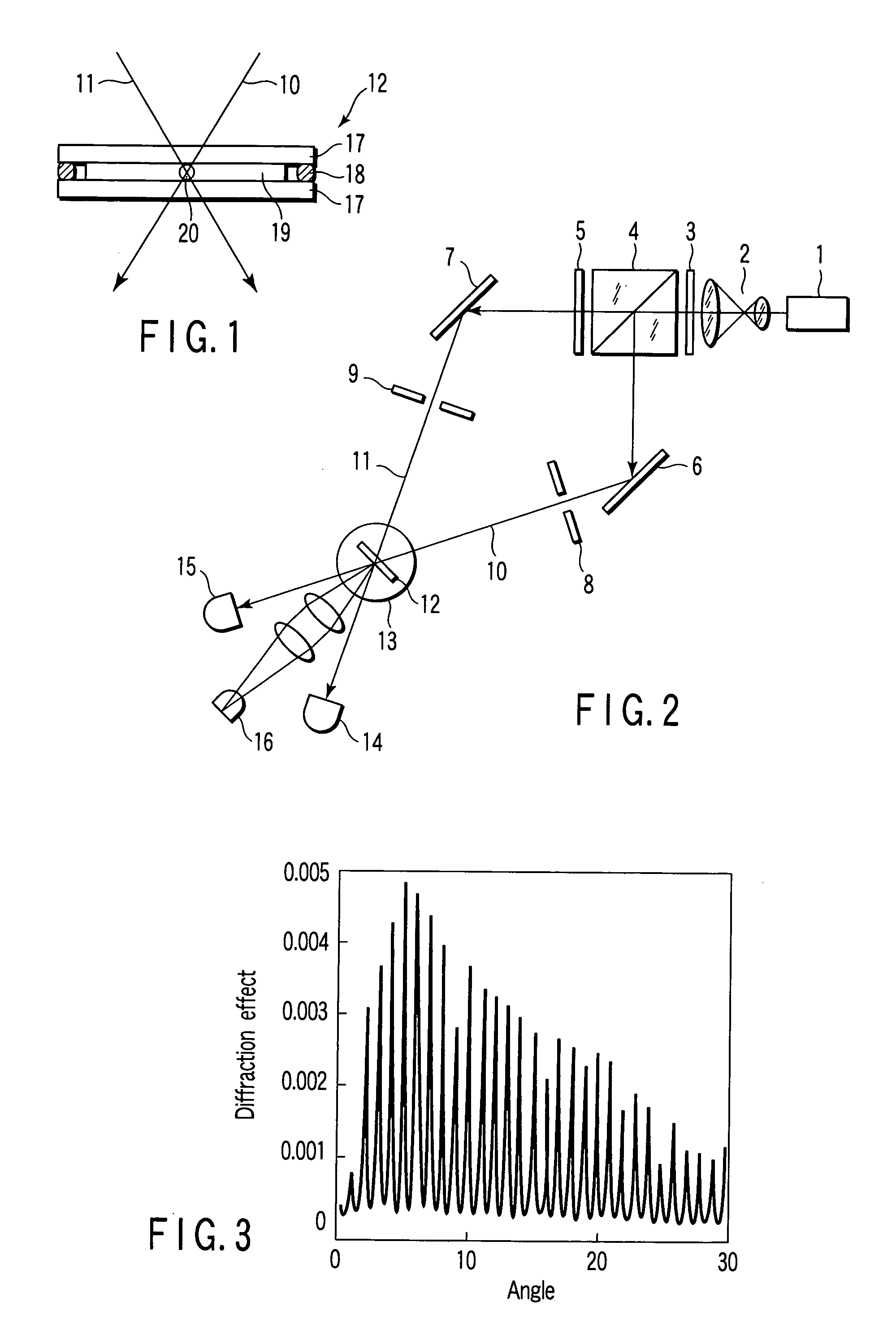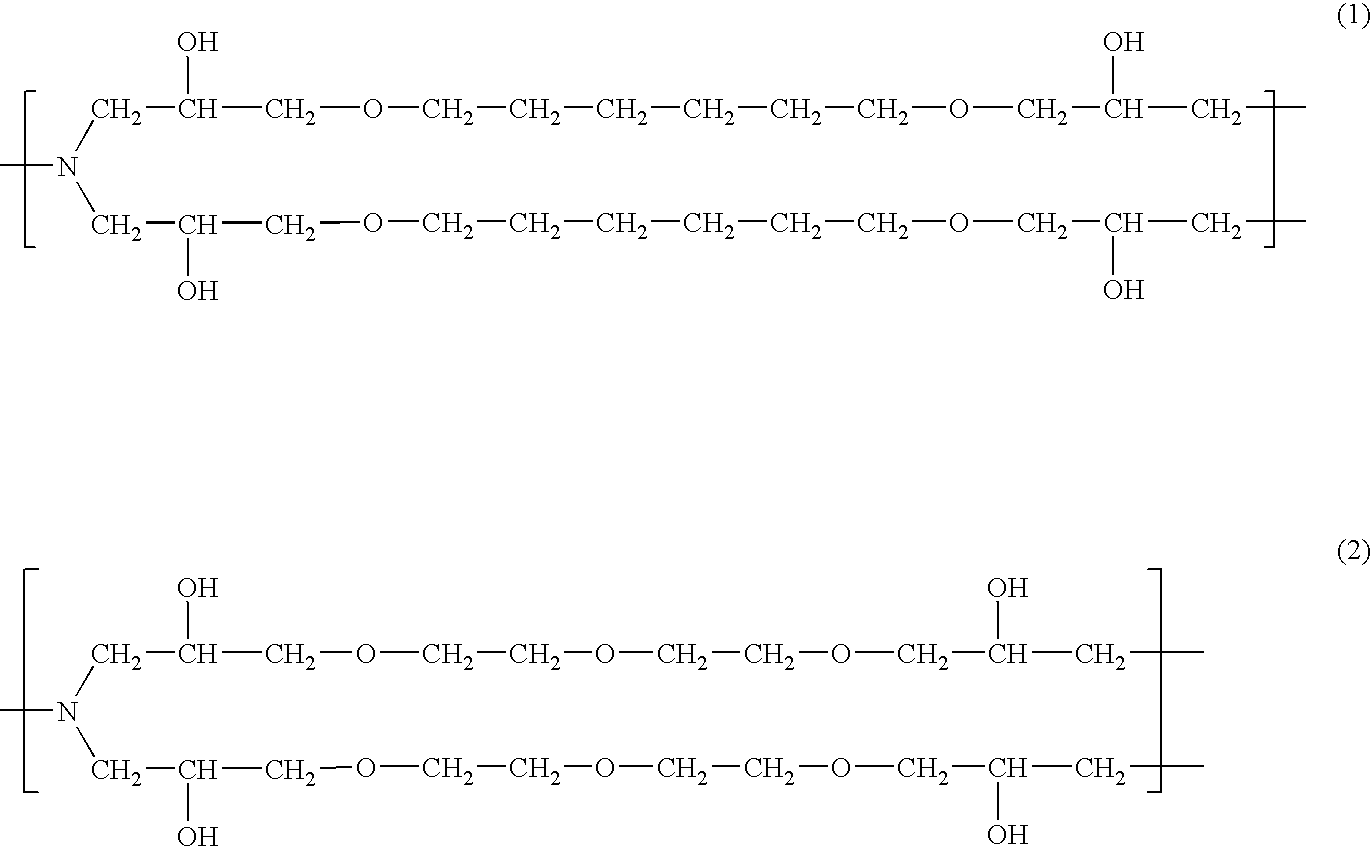Holographic recording medium
a recording medium and optical recording technology, applied in the field of optical recording mediums, can solve the problems of limited recording capacity and refractive index modulation of holographic recording mediums, inability to obtain a sufficiently large difference in refractive index, and difficulty in accurately reading out recorded data
- Summary
- Abstract
- Description
- Claims
- Application Information
AI Technical Summary
Problems solved by technology
Method used
Image
Examples
example 1
[0039] In the first step, a solution of the precursor of the polymer matrix was obtained by mixing 15.1 g of 1,6-hexanediol diglycidyl ether (epoxy equivalent of 151, manufactured by Nagase ChemteX Corporation), which was used as a diglycidyl ether, and 3.38 g of diethylenetriamine used as an amine. On the other hand, a monomer solution was obtained by mixing 1.546 g of N-vinylcarbazole used as a radically polymerizable compound, 0.891 g of N-vinylpyrrolidone used as another radically polymerizable compound, 0.056 g of Irgacure 784 manufactured by Ciba Specialty Chemicals and used a photo radical polymerization initiator, and 0.011 g of Perbutyl H manufactured by NOF Corporation and used as a radical polymerization initiator.
[0040] A solution of the precursor of the recording layer was obtained by mixing 8 g of the solution of the precursor of the polymer matrix noted above with 2 g of the monomer solution noted above, followed by defoaming the mixed solution. The solution of the p...
example 2
[0049] A solution of the precursor of the recording layer was prepared as in Example 1, except that the mixing amount of the solution of the precursor of the polymer matrix was changed to 9 g, and the mixing amount of the monomer solution was changed to 1 g. Then, a test piece of the holographic optical recording medium was prepared by the method similar to that in Example 1 by using the solution of the precursor of the recording layer thus prepared.
[0050] The precursor of the polymer matrix was cured at room temperature and three dimensionally cross-linked, with the result that the entire recording layer was solidified. The test piece thus prepared was irradiated with the information light and the reference light under the conditions similar to those in Example 1 so as to record a transmission type hologram. After irradiation with a light beam having a dose of 160 mJ / cm2, saturation was achieved with a diffraction efficiency of 91%.
[0051] Further, the value of M / # and the volume ...
example 3
[0053] In the first step, a solution of the precursor of the polymer matrix was prepared by mixing 7.32 g of diethylene glycol diglycidyl ether having an epoxy equivalent of 122, which was manufactured by Nagase ChemteX Corporation and used as a diglycidyl ether, with 2.16 g of diethylenetriamine used as an amine. A solution of the precursor of the recording layer was prepared as in Example 1, except that used was the solution of the precursor of the polymer matrix thus prepared. Then, a test piece of the holographic optical recording medium was manufactured as in Example 1.
[0054] The precursor of the polymer matrix was cured at room temperature and three dimensionally cross-linked, with the result that the entire recording layer was solidified. The test piece thus prepared was irradiated with the information light and the reference light under the conditions similar to those in Example 1 so as to record a transmission type hologram. After irradiation with a light beam having a dos...
PUM
| Property | Measurement | Unit |
|---|---|---|
| thickness | aaaaa | aaaaa |
| thickness | aaaaa | aaaaa |
| thickness | aaaaa | aaaaa |
Abstract
Description
Claims
Application Information
 Login to View More
Login to View More - R&D
- Intellectual Property
- Life Sciences
- Materials
- Tech Scout
- Unparalleled Data Quality
- Higher Quality Content
- 60% Fewer Hallucinations
Browse by: Latest US Patents, China's latest patents, Technical Efficacy Thesaurus, Application Domain, Technology Topic, Popular Technical Reports.
© 2025 PatSnap. All rights reserved.Legal|Privacy policy|Modern Slavery Act Transparency Statement|Sitemap|About US| Contact US: help@patsnap.com



